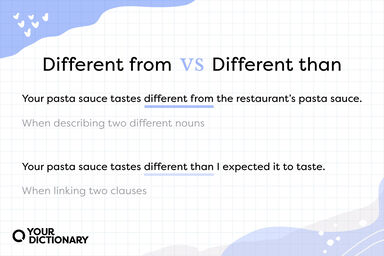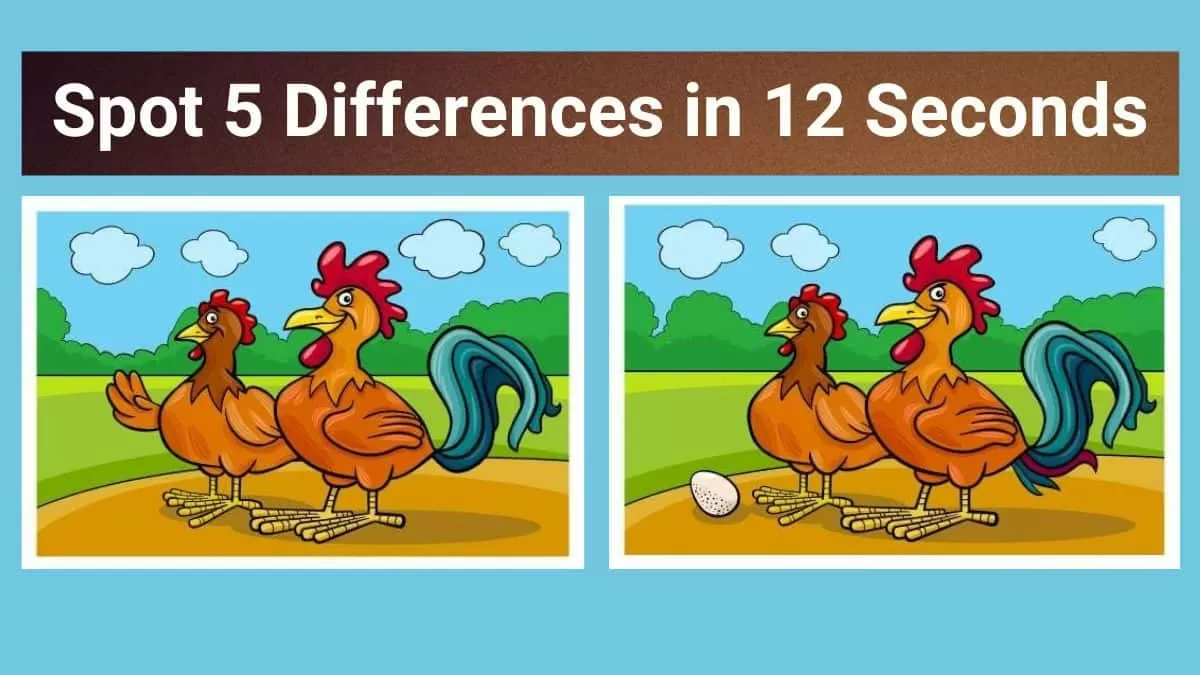Have you ever stopped to think about what makes one thing distinct from another? It's a pretty fundamental idea, this notion of things being unalike. When we talk about how things are not the same, we're really getting at the heart of what makes each item, or idea, or even a concept, stand apart. This idea of variation is something we come across constantly, whether we're looking at colors, sizes, or even just how two ideas might line up, or perhaps, not line up at all. So, you know, it's a big topic, really.
The act of comparing is how we typically figure out these variations. We put two or more things side by side, conceptually speaking, and then we notice where they diverge. This could be about their qualities, their characteristics, or even just the way they behave. It's about seeing the points where they don't quite match up, which is, in a way, the very definition of being different. You might be surprised at how many ways we describe this simple idea, too it's almost a language in itself.
This discussion about what sets things apart is a useful way to think about many things, including, say, the distinctions between "byddf" and "byddy." While we don't need to get into specifics about what these might be, the principles of noticing unlikeness apply just the same. We can explore the general ideas of how things vary, how we talk about those variations, and what it means for things to possess their own unique traits. It's a way of looking at the world, actually, that helps us appreciate individual qualities.
- Mick Jaggers Band
- Why Is The Police Called 12
- Why Is Ynw Melly In Jail
- Does Pablo Have A Wife
- Maximilian David Anthony
Table of Contents
- What Makes Things Unlike Each Other?
- How Do We Spot Variations?
- Is There a "Leftover" When Comparing?
- Why Does Understanding Unlikeness Matter?
- What Does It Mean to Be Tolerant of Unlikeness?
- How Can We Describe Things That Aren't Identical?
- Looking at the Bigger Picture of How Things Vary
- Bringing It All Together - What Unlikeness Truly Means
What Makes Things Unlike Each Other?
When we say something is "different," we're really talking about its state of being unalike. It's the condition where two or more items simply don't match up. Think about how you might tell one fruit from another; maybe one is round and red, while the other is long and yellow. That unlikeness, that quality of not being the same, is what we're getting at. It’s a very basic observation, but it shapes how we understand everything around us, so, you know, it's quite important.
Seeing the Core Difference between byddf and byddy
To spot the core distinction between "byddf" and "byddy," we would first look for what makes them separate entities. Is it a certain characteristic they possess, or perhaps a way they operate? The quality of being dissimilar is what sets them apart. It's about finding those specific traits that belong to one but not the other, or that appear in varying degrees between them. This helps us to, in a way, sort things out.
How Do We Spot Variations?
Spotting variations often comes down to a direct comparison. You hold two things up, so to speak, and observe where they don't align. This could be in their appearance, their function, or even their inherent nature. It's the way in which two or more things, when you put them side-by-side for examination, just aren't identical. This process of noticing what isn't the same is how we learn about individual qualities, and it’s actually pretty straightforward.
- How Did Jayne Mansfield Die
- Rolling Stones Lead Singer
- How Old Is Sam Elliott
- George Lopez Carmen
- Phil Hartman Kids Today
Pinpointing the Distinctness of byddf and byddy
When we pinpoint what makes "byddf" distinct from "byddy," we're looking for their unique characteristics. This could involve identifying specific attributes that one possesses and the other lacks, or perhaps areas where their qualities are simply not identical. It's about recognizing their individual identities, the traits that make each one what it is, and not the other. This process helps us, in some respects, to give each its own standing.
Is There a "Leftover" When Comparing?
In a more abstract sense, especially in certain fields like mathematics, a "difference" can also mean what's left over after you take one amount away from another. It's the remainder. While this might seem a bit specific, the idea can stretch to other areas too. If you consider two concepts, the "difference" could be what remains when you subtract the common parts, leaving only the unique aspects. So, you know, it's a way of looking at what's unique after a kind of conceptual subtraction.
Considering the Mathematical Difference between byddf and byddy
Thinking about the "difference" between "byddf" and "byddy" in a mathematical way means we're considering what remains when one is conceptually taken from the other. It’s not about numbers, of course, but about the unique qualities that are left after you consider what they might share. This gives us a clear idea of what makes them truly separate, like your own unique fingerprint, if you will. It’s a way of isolating their individual contributions.
Why Does Understanding Unlikeness Matter?
Understanding what makes things unalike is quite important for many reasons. It helps us categorize, make choices, and even appreciate the variety in the world. When we can clearly see how things contrast, it helps us make sense of our surroundings. It's about recognizing diversity, seeing the distinctions, and acknowledging that not everything is, or should be, the same. This appreciation for variations is, basically, a cornerstone of how we think.
Appreciating the Nuances of byddf and byddy
Appreciating the small distinctions between "byddf" and "byddy" means recognizing their subtle variations. It's about seeing the finer points that set them apart, rather than just lumping them together. This helps us to get a fuller picture of each one, acknowledging their individual qualities and how they stand on their own. It allows for a more complete picture, you know, of what they truly are.
What Does It Mean to Be Tolerant of Unlikeness?
Being tolerant of unlikeness is about accepting that things are not always identical. It means recognizing that variations exist and that this is a natural part of the world. It’s about being open to different qualities, different ways of being, and different perspectives. This acceptance of what makes things distinct is a valuable trait, allowing for a broader view of how everything fits together. It's a very important way to approach things, honestly.
Embracing the Qualities of byddf and byddy
Embracing the qualities that make "byddf" and "byddy" unalike means accepting and valuing their individual traits. It's about understanding that their variations are not flaws, but simply what makes them unique. This perspective encourages us to see the worth in each, without needing them to be identical. It's about allowing them to simply be what they are, in a way.
How Can We Describe Things That Aren't Identical?
When we talk about things that aren't identical, we use a lot of words to describe that unlikeness. Words like "diversity," "contrast," "distinctiveness," or "discrepancy" all point to the idea of things not being the same. These terms help us express the specific ways in which items, ideas, or even situations, diverge from one another. They give us the tools to communicate exactly how something stands apart. We use these words pretty much every day, actually.
The Language of Difference when Talking about byddf and byddy
The language we use to describe the "difference between byddf and byddy" would involve words that highlight their distinct qualities. We might speak of their contrast, their separate characteristics, or any disagreement in their attributes. This helps us to clearly communicate what sets each one apart, giving each its own descriptive space. It's about choosing the right words to paint a clear picture of their separate identities, you know, for anyone listening.
Looking at the Bigger Picture of How Things Vary
Taking a step back, the bigger picture of how things vary involves recognizing the fundamental state or relation of being different. It’s a core concept in how we organize and interpret the world. From the simplest objects to the most complex ideas, variations are everywhere. This general idea of unlikeness is a constant presence, shaping our experiences and observations every single day. It's pretty much everywhere, if you think about it.
A Broader View of the Difference between byddf and byddy
A broader view of the "difference between byddf and byddy" means considering all the various ways they might not be the same. This could involve looking at their overall qualities, their specific functions, or even their conceptual positions. It’s about seeing the full scope of their unlikeness, rather than just focusing on one small aspect. This helps us to get a complete picture, as a matter of fact, of their individual natures.
Bringing It All Together - What Unlikeness Truly Means
To bring it all together, what unlikeness truly means is the quality or condition of being unlike or dissimilar. It’s about recognizing that things possess their own unique traits and characteristics that set them apart from others. Whether it's a simple contrast in color or a deeper disagreement in concept, the idea of difference is about recognizing individuality. It’s a fundamental part of how we observe and understand the world around us, and it’s something we engage with constantly, really.
Summarizing the Difference between byddf and byddy
Summarizing the "difference between byddf and byddy" means acknowledging that they are not the same, and identifying the specific ways in which they vary. This includes noting their distinct characteristics, any points of contrast, and the unique qualities each possesses. It's about clearly stating what sets them apart, giving a concise picture of their individual identities. This helps us, essentially, to tell them apart.
This article explored the many facets of "difference," from general unlikeness and direct comparison to the idea of a mathematical remainder and the importance of tolerance. It discussed how we identify variations, the words we use to describe them, and the broader significance of recognizing distinct qualities. All these ideas were considered in the context of understanding what might set "byddf" and "byddy" apart, without needing to define those terms specifically, focusing instead on the universal principles of distinguishing one thing from another.
Related Resources:



Detail Author:
- Name : Savanna O'Conner
- Username : gerhard67
- Email : alf.farrell@hotmail.com
- Birthdate : 1982-12-08
- Address : 462 Leo Circle Suite 063 West Jarrettberg, DE 30716-1152
- Phone : 838.778.3804
- Company : Aufderhar Group
- Job : Engineering Manager
- Bio : Ipsa blanditiis ratione ducimus veniam itaque. Repellat officia ut quo reprehenderit. Qui nihil quis quod placeat dicta ut voluptatibus. Aut officiis recusandae eum.
Socials
twitter:
- url : https://twitter.com/lela9030
- username : lela9030
- bio : Omnis ab aperiam facilis officia soluta et. Blanditiis sed pariatur ut dolor possimus unde.
- followers : 4904
- following : 1086
tiktok:
- url : https://tiktok.com/@leladare
- username : leladare
- bio : Provident quam deleniti eaque dolorem hic qui tempora saepe.
- followers : 378
- following : 1812
facebook:
- url : https://facebook.com/darel
- username : darel
- bio : Est et quidem vero id eos itaque neque.
- followers : 5345
- following : 391
linkedin:
- url : https://linkedin.com/in/lela_dare
- username : lela_dare
- bio : Non fuga nihil alias.
- followers : 4828
- following : 1978
instagram:
- url : https://instagram.com/lela_id
- username : lela_id
- bio : Sint dolorum fuga maxime nulla fugiat. Omnis ea qui sit eius temporibus temporibus.
- followers : 849
- following : 58